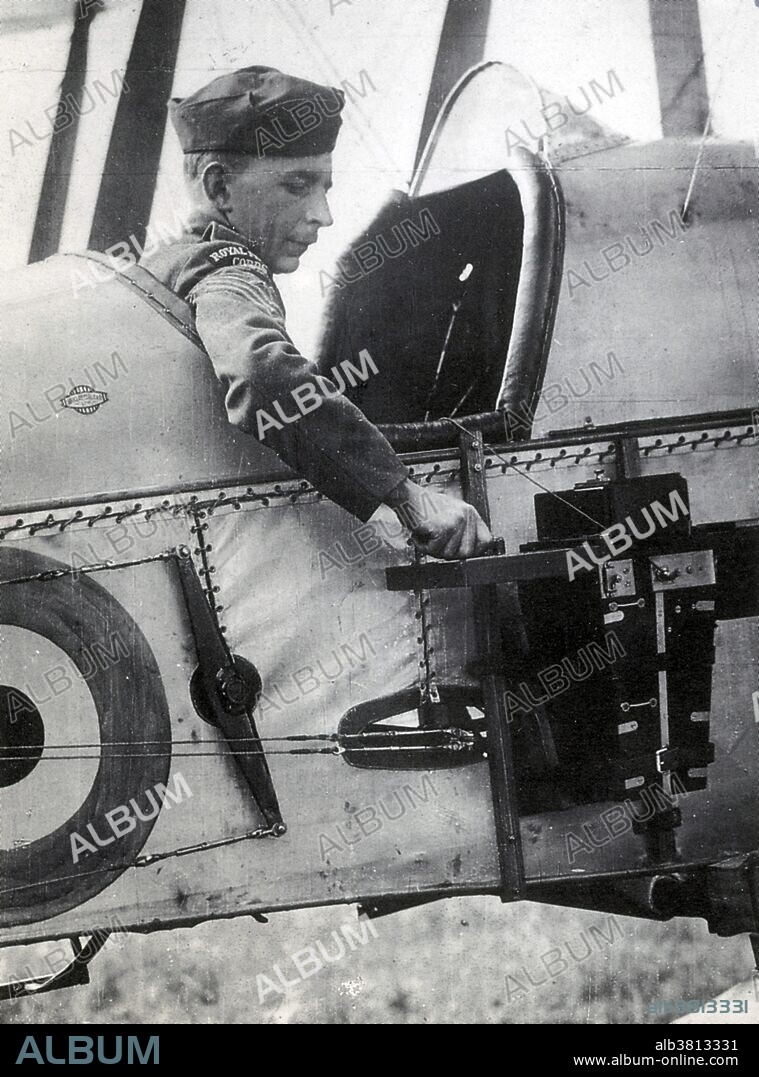alb3813331
WWI, RFC Aerial Reconnaissance Camera, 1916

|
Add to another lightbox |
|
Add to another lightbox |



Title:
WWI, RFC Aerial Reconnaissance Camera, 1916
Caption:
The Royal Flying Corps (RFC) was the air arm of the British Army during WWI. During the early part of the war, the RFC supported the British Army, by artillery co-operation and photographic reconnaissance. During the First Battle of the Aisne, the RFC made use of wireless telegraphy to assist with artillery targeting and took aerial photographs for the first time. From 16,000 feet a photographic plate could cover some 2 miles by 3 miles of front line in sharp detail. In 1915 Lieutenant-Colonel JTC Moore-Brabrazon designed the first practical aerial camera. These semi-automatic cameras became a high priority for the Corps and photo-reconnaissance aircraft were soon operational in numbers with the RFC. The camera was usually fixed to the side of the fuselage, or operated through a hole in the floor. The increasing need for surveys of the western front and its approaches made extensive aerial photography essential. Caption: "A B.E.2c reconnaissance aircraft of the RFC with an aerial reconnaissance camera fixed to the side of the fuselage. Though fighter aces grabbed the glory, reconnaissance remained the most vital role for the air arms of both sides. 1916"
Credit:
Album / Science Source / New York Public Library
Releases:
Model: No - Property: No
Rights questions?
Rights questions?
Image size:
3000 x 4050 px | 34.8 MB
Print size:
25.4 x 34.3 cm | 10.0 x 13.5 in (300 dpi)
Keywords:
1916 • 1ST WORLD WAR • 20 XX TWENTIETH CENTURY • 20TH CENTURY • AERIAL RECONNAISSANCE CAMERA • AERONAUT • AERONAUTICAL • AERONAUTICS • AIR FORCE • AIRCRAFT • AIRFORCE • AIRPLANE • AIR_FORCE • AVIATION • B. E.2C • BE2C • BI-PLANE • BIPLANE • BRITISH • BW • CELEBRITY • ENGLISH • EVENT • FAMOUS • FIGHTER PLANE • FIRST WORLD WAR • FLIGHT • FLYING • GLOBAL WAR • GREAT WAR • HISTORIC • HISTORICAL • HISTORY • HUNDRED YEARS WAR • IMPORTANT • LUFTWAFFE • MALE • MAN • MEN • MILITARY • NOTABLE • PHOTO • PHOTOGRAPH • PHOTOGRAPHIC RECONNAISSANCE • RECONNAISSANCE • RFC • ROYAL FLYING CORPS • TWENTIETH CENTURY • WAR • WELL-KNOWN • WORLD WAR I (1914-18) • WORLD WAR I • WW1 • WWI
 Pinterest
Pinterest Twitter
Twitter Facebook
Facebook Copy link
Copy link Email
Email

